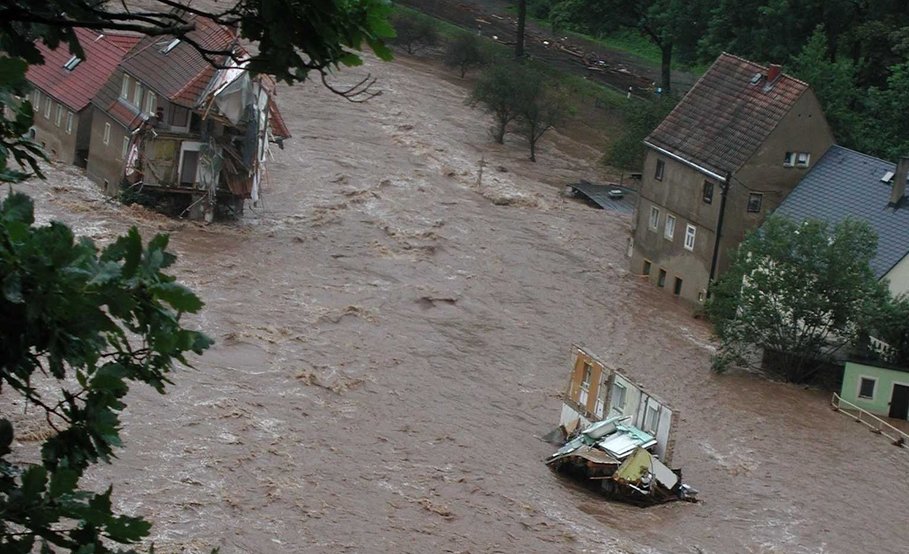Flood Risk and Climate Apaptation

The flood events of recent years, in July 2021, June 2013 and August 2002, were the most expensive natural disasters in Germany, costing around EUR 30 billion, EUR 8 billion and EUR 12 billion respectively. Due to climate and global change, such as the increase in values in flood-prone areas, it is likely that the risk of flooding will continue to rise in the future.
The objective of our work is the development of methods to quantify the flood risk, as well as to assess strategies for climate adaptation. We cover the entire process chain, from the initiating meteorological causes through the outflow in the watersheds, the waves of high water in the rivers and the effects of protective measures to the negative effects of floods. We develop and couple simulation models for the various processes, with a focus on large-scale applications. For instance, we develop novel, probabilistic, multi-parameter Models to estimate flood damage of private households and companies. Besides these modelling approaches, we also use data driven methods to quantify occurrence probabilities, intensities and flood consequences for people and their environment. Since 2002, data acquisition was undertaken after all large floods in Germany. On this basis, we developed a flood damage database, which is unique in respect of the amount of contained damage cases and detailed information. Building on process analyses of past flood events we quantify the effects of various precautionary measures and support decisions under uncertainty for an efficient, sustainable risk management under climate change conditions.